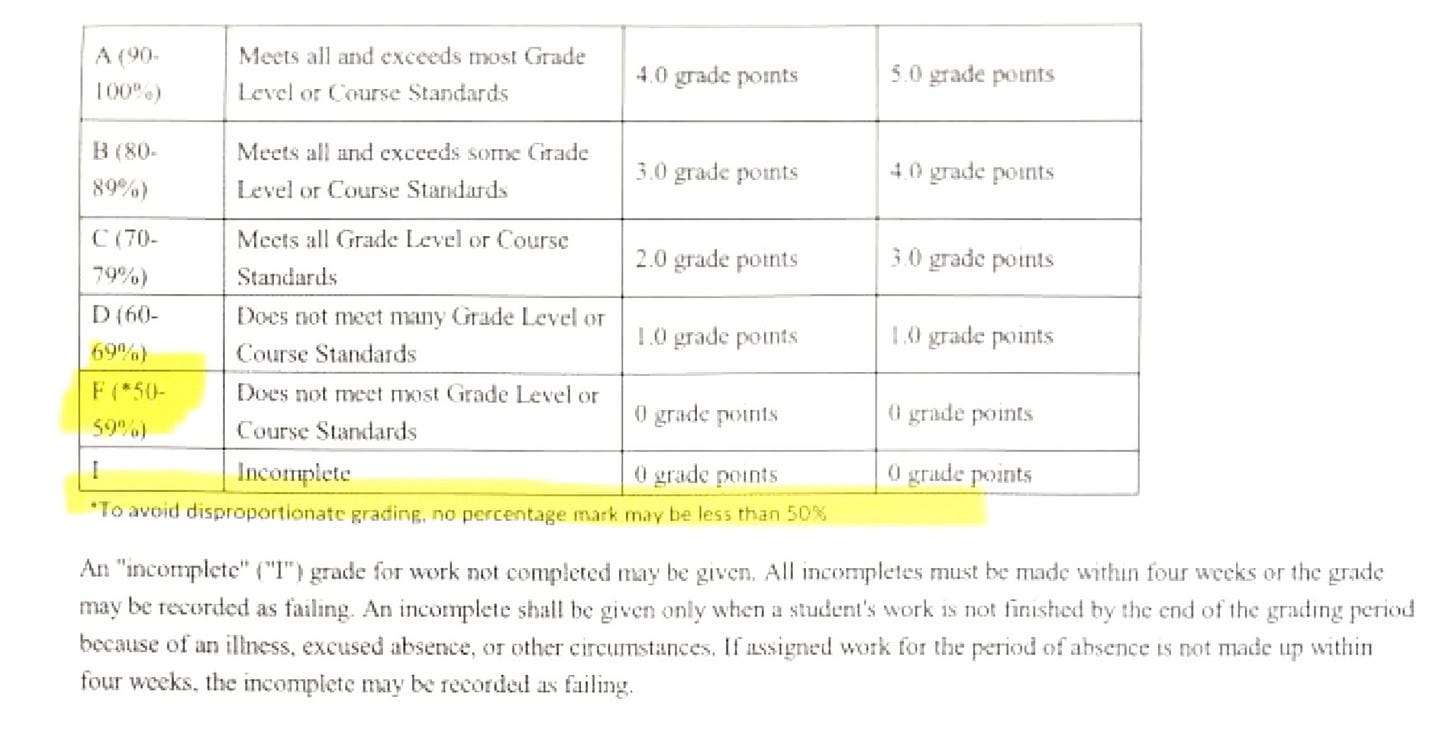Oceanside Unified scraps ‘no zero’ grading, sparking debate
Oceanside Unified’s new policy allows all assignments to receive at least 50% — even if incomplete — is dividing educators, with critics warning it lowers expectations and inflates grades.
OCEANSIDE — A new “equitable” grading policy mandating any assignment, completed or not, receive a minimum 50% grade is dividing the Oceanside Unified School District.
Many teachers are confused, angry and upset over the new policy, which rolled out on Thursday for the first day of school. Several sources said parents and students were not notified of the change.
The sources asked for anonymity in fear of retaliation from the district and the Oceanside Teachers Association. The new system is for middle and high school students.
The grading system is based on the controversial book “Grading for Equity: What It Is, Why It Matters, and How It Can Transform Schools and Classrooms” by Joe Feldman, sources said. One of the goals, they said, is to make sure all students are college and career-ready.
Documents of the new policy were leaked online earlier this week after being published on social media. Teachers were sent an update to Regulation 5121: Grades/Evaluation of Student Achievement, which outlines the new system.
“To avoid disproportionate grading, no percentage mark may be less than 50%,” one of the documents read regarding scoring an incomplete assignment. “If assigned work for the period of absence is not made up within four weeks, the incomplete may be recorded as failing (and reverts to a 50%).”

Messages were left with the Oceanside Teachers Association and every OUSD Board of Education Trustee, but no one responded by deadline.
According to Donald Bendz, the director of communications for the district, the points on a 100% scale are between 100-90 for an A, 89-80 is a B, 79-70 C for a and 69-60 for a D. Those ranges are the same number of points, and the range for F being 50-59 makes it the same range for all the letter grades.
A student who earns 0% on all assignments earns an F on their report card, as does a student who earns 50% on all assignments, he said.
“However, a student who earns 100%, 80%, 85%, 74%, 0%, 0% has a 56% average, which is an F on the report card,” Bendz explained. “If we replace the 0% with 50%, the average is 73% which is a C on the report card. The zero does not disproportionately impact student grades. A 50% gives a student a 50/50 chance to get back on track, and that is fair.”
Bendz said the district’s approach was taken from a paper published by Doug Reeves in 2004 and 2008 in “The Case Against the Zero,” and not Feldman. He said Reeves’ work focuses on the mathematical disproportionate impact of a zero on students’ path back to academic success after a temporary setback. Researchers and educators have discussed this practice since the early 2000’s, Bendz said.
A new standard
Sources said the new system is unethical, lacks integrity, and potentially opens up legal consequences for those forcing teachers to manipulate grades. They said the district is based on fear and toxic, pointing to district leadership as setting the tone.
Keep reading with a 7-day free trial
Subscribe to North County Pipeline to keep reading this post and get 7 days of free access to the full post archives.



